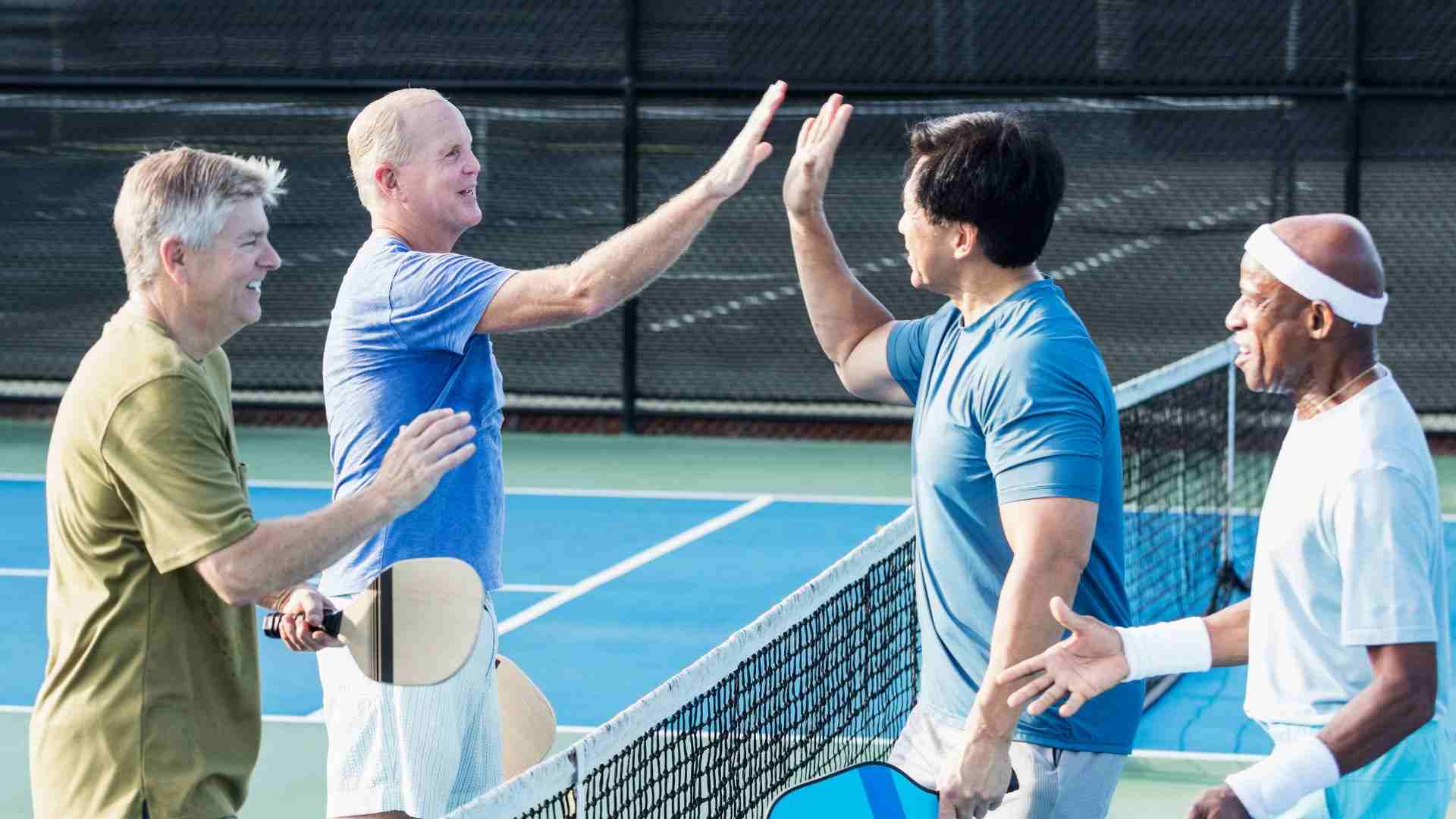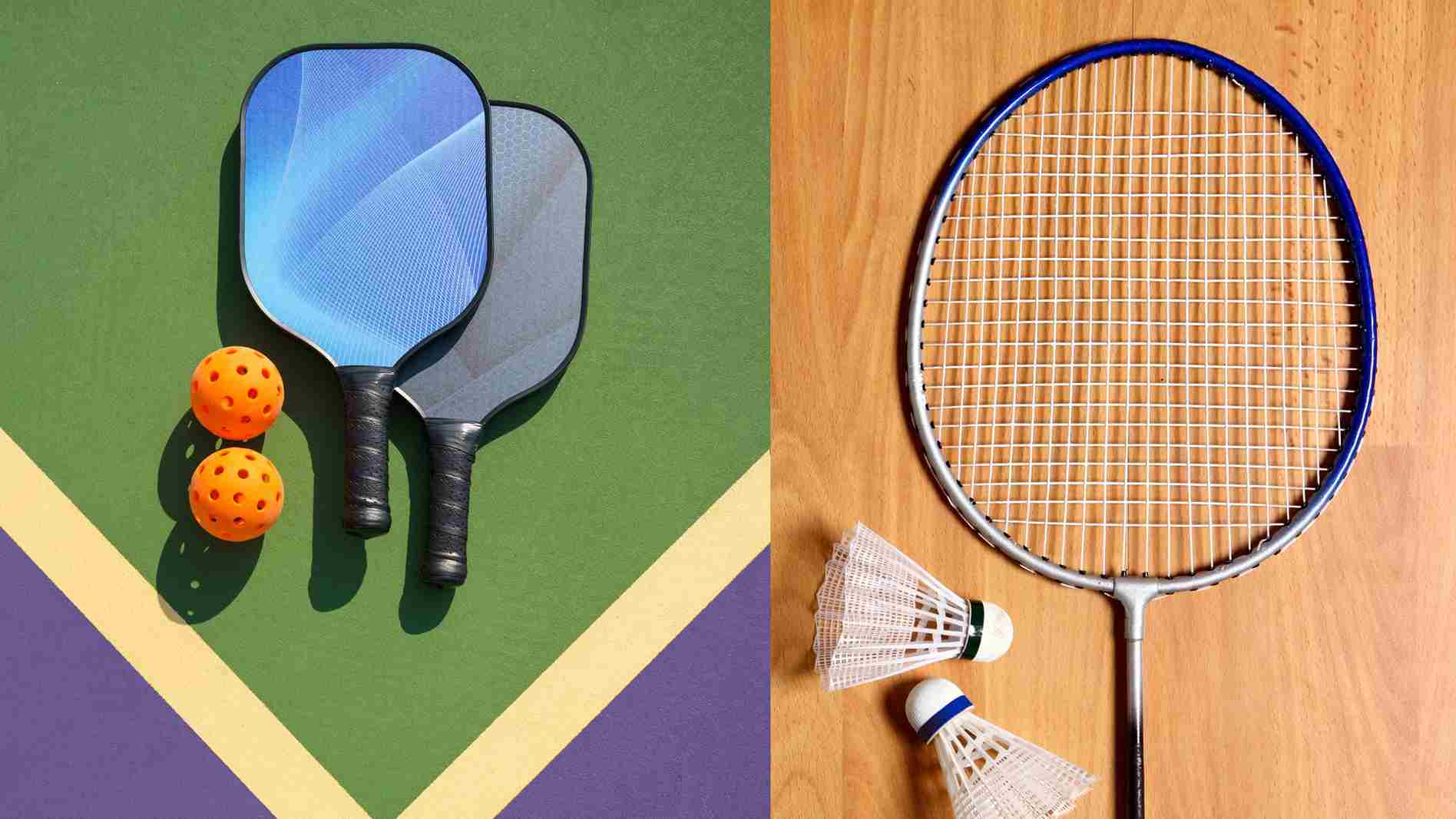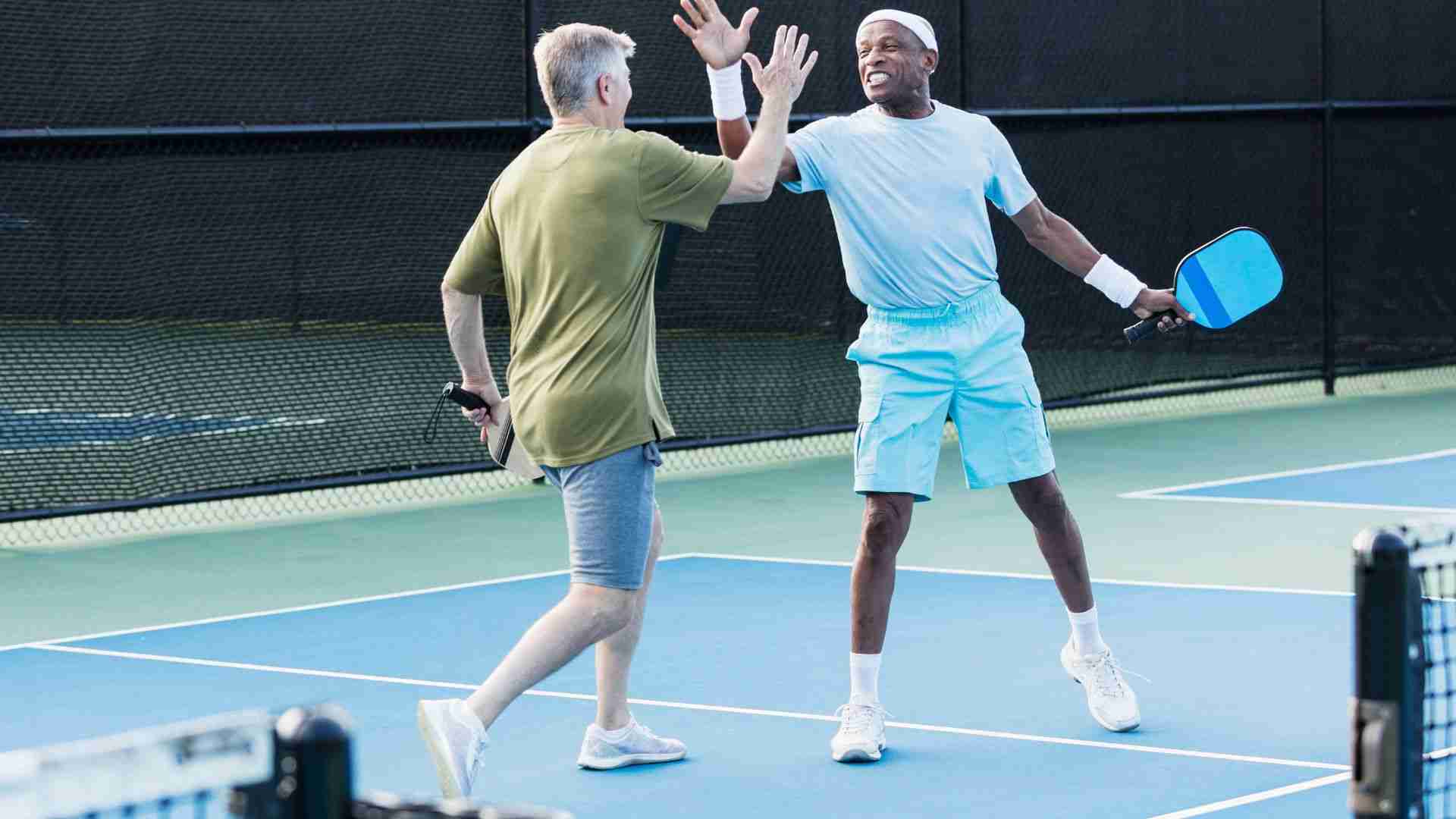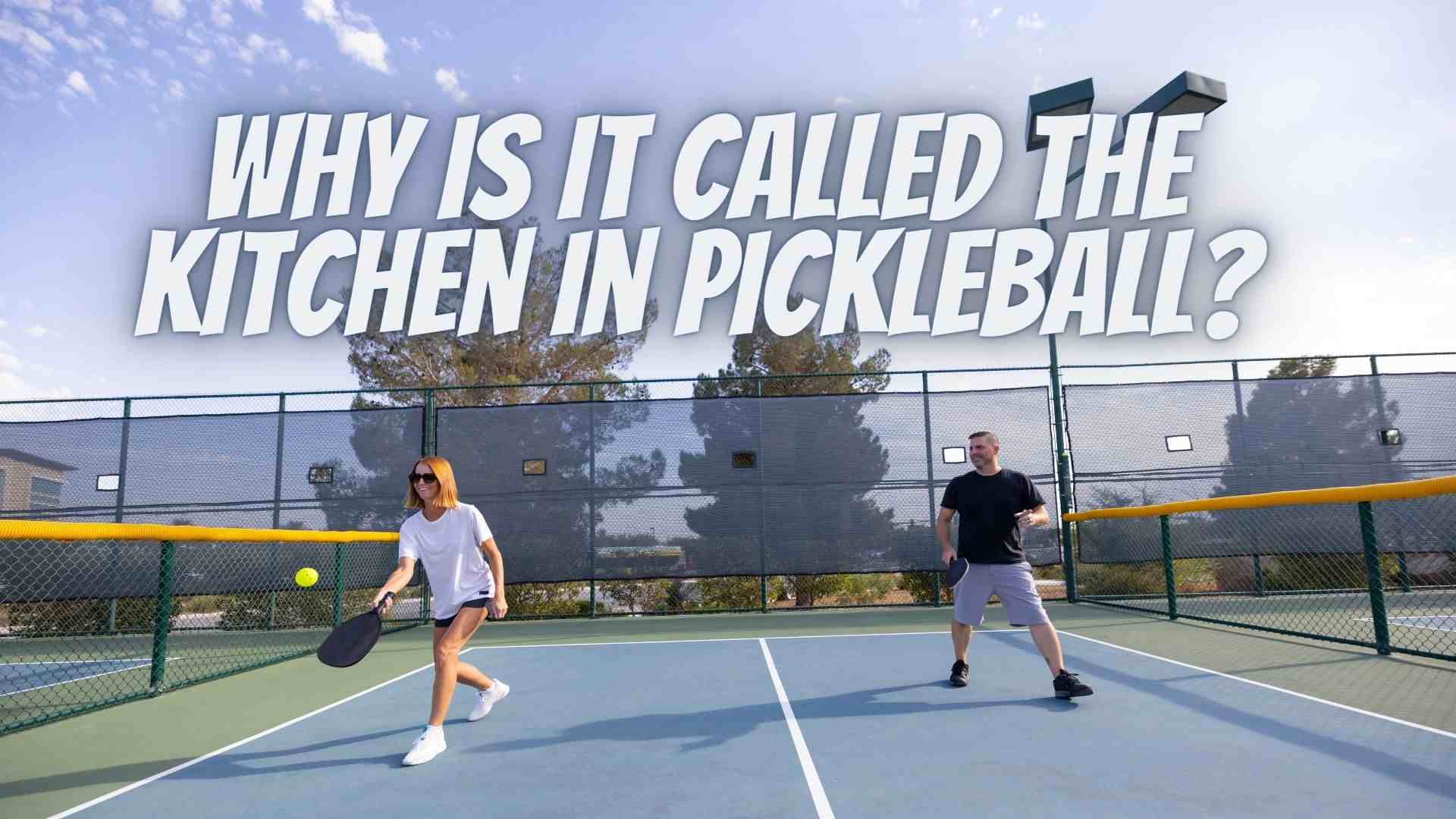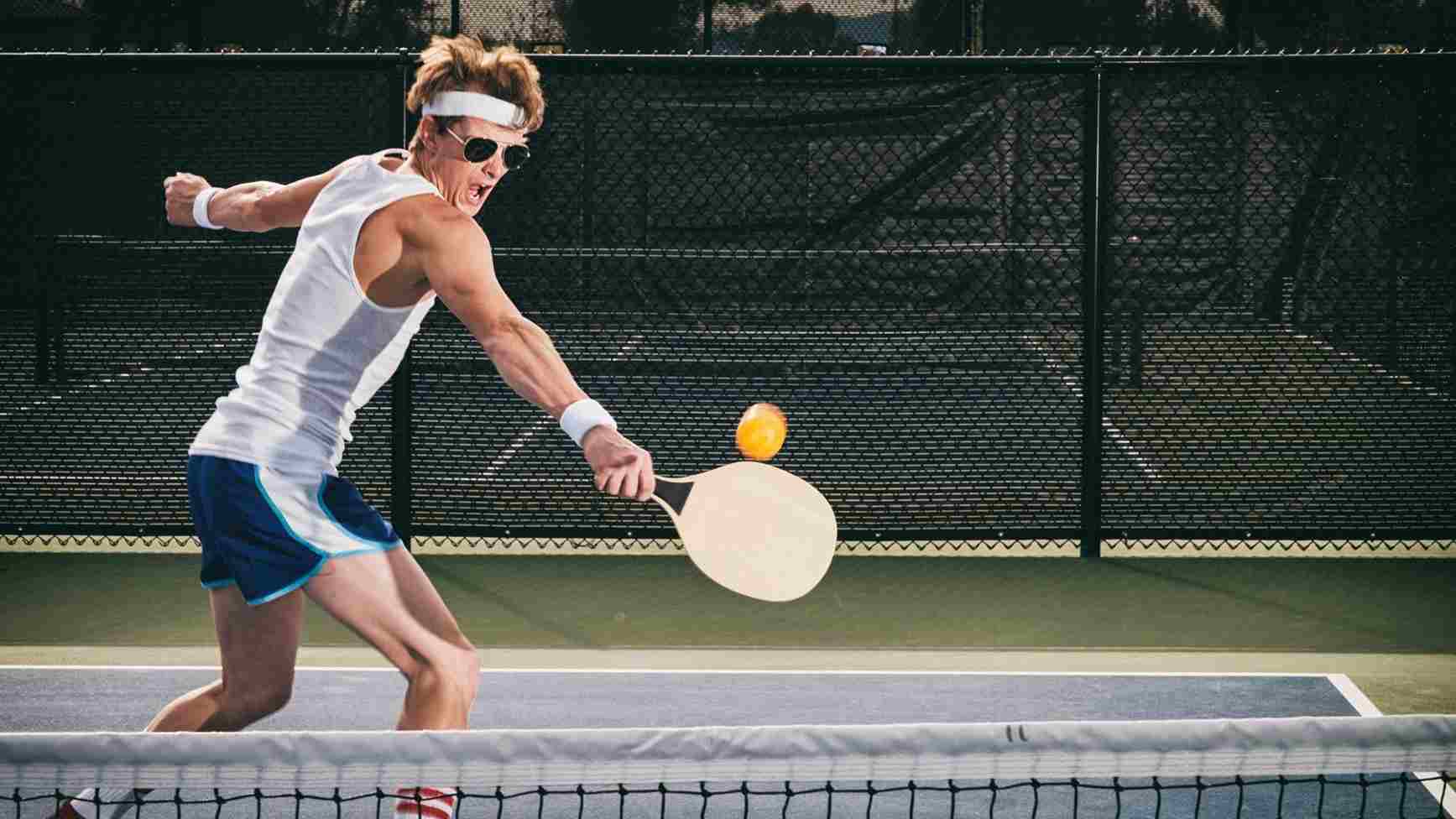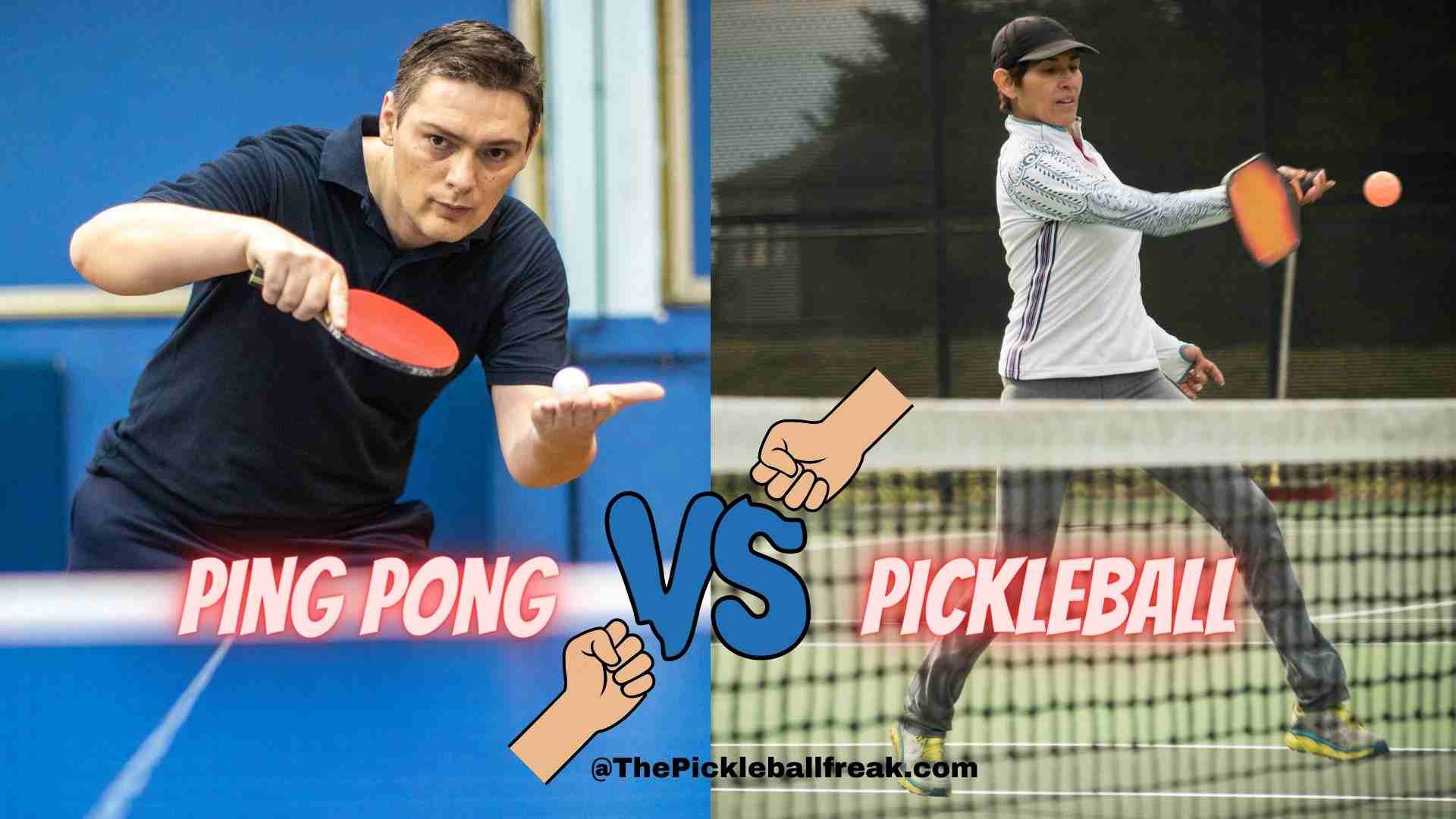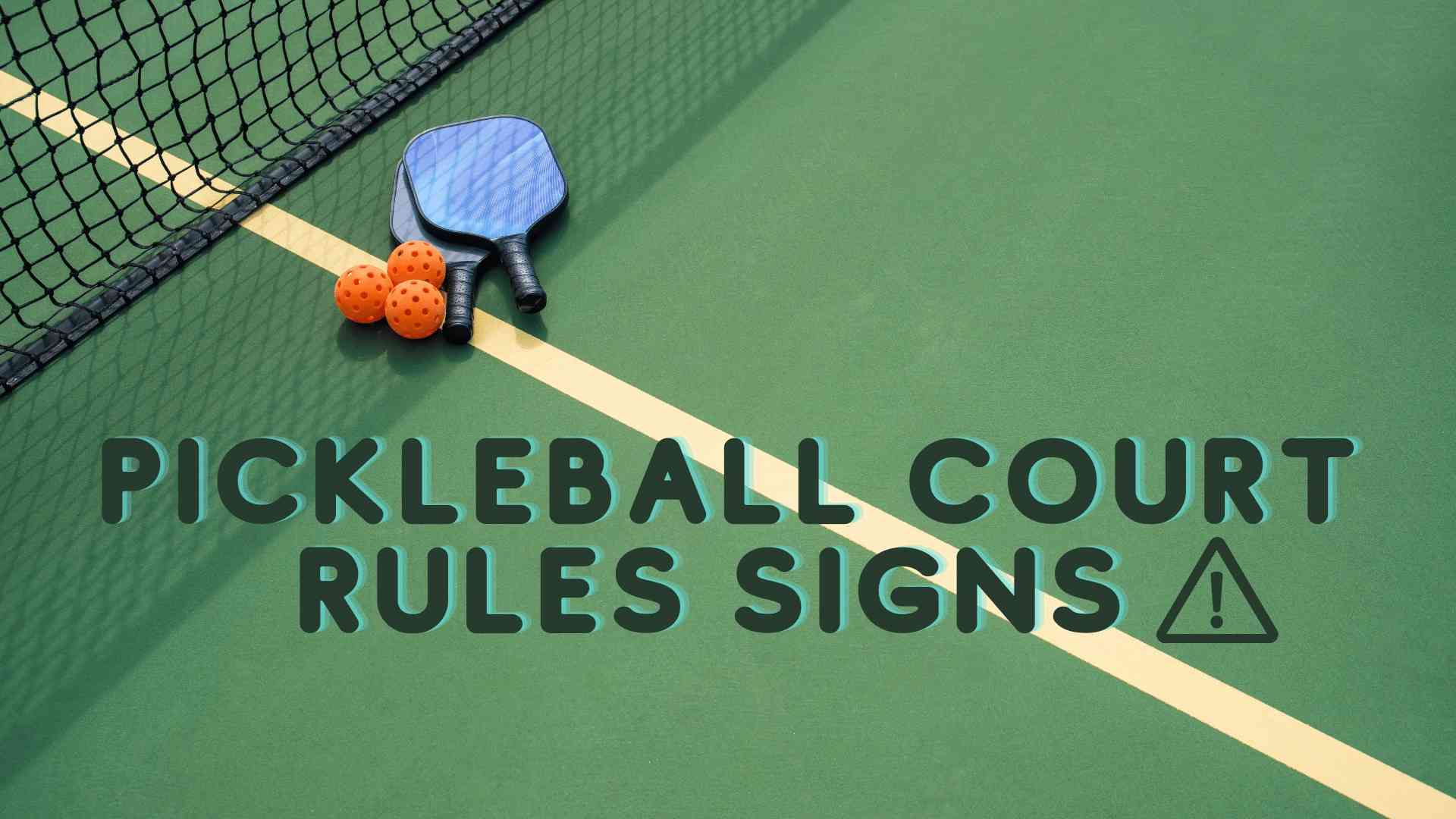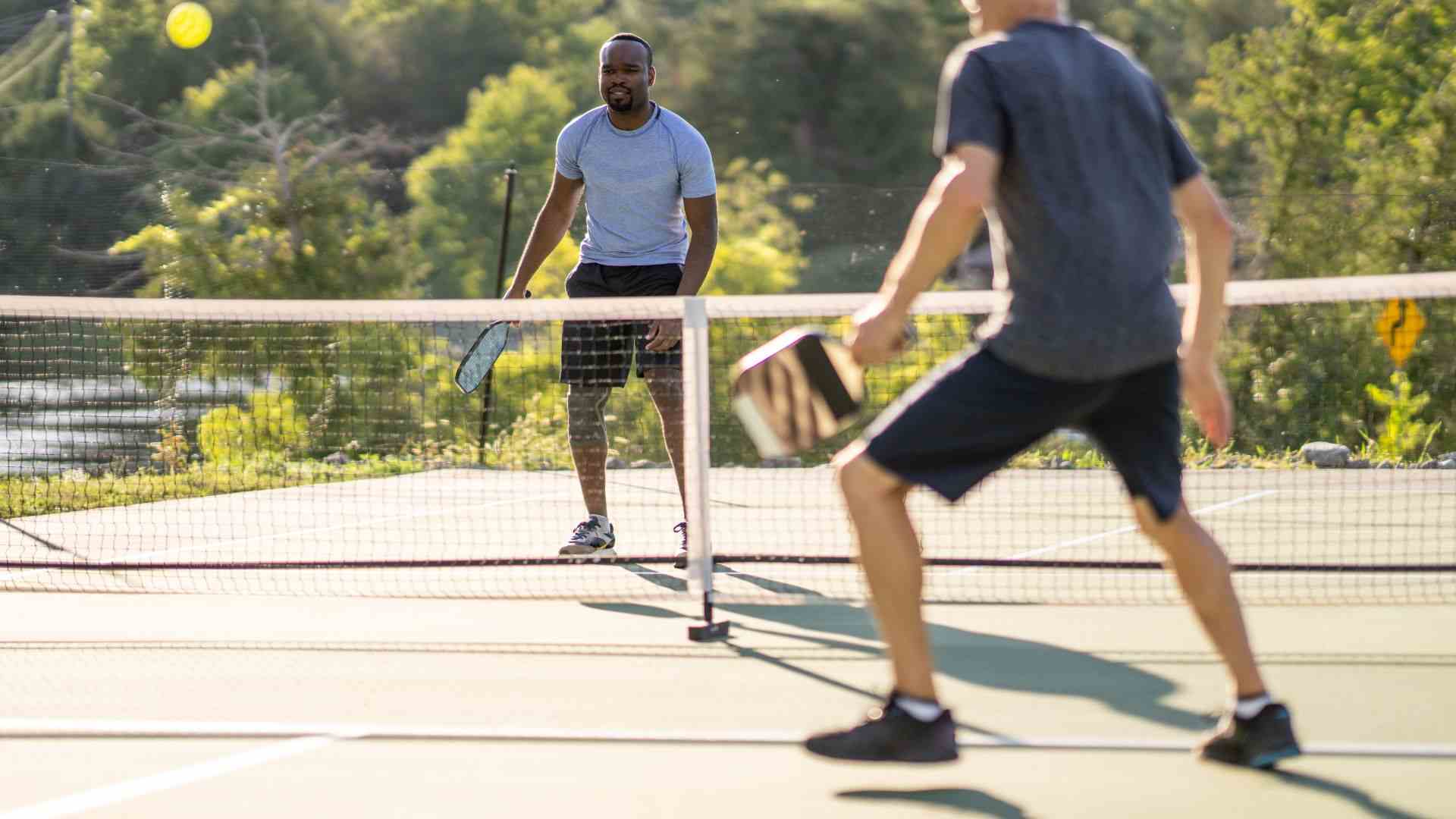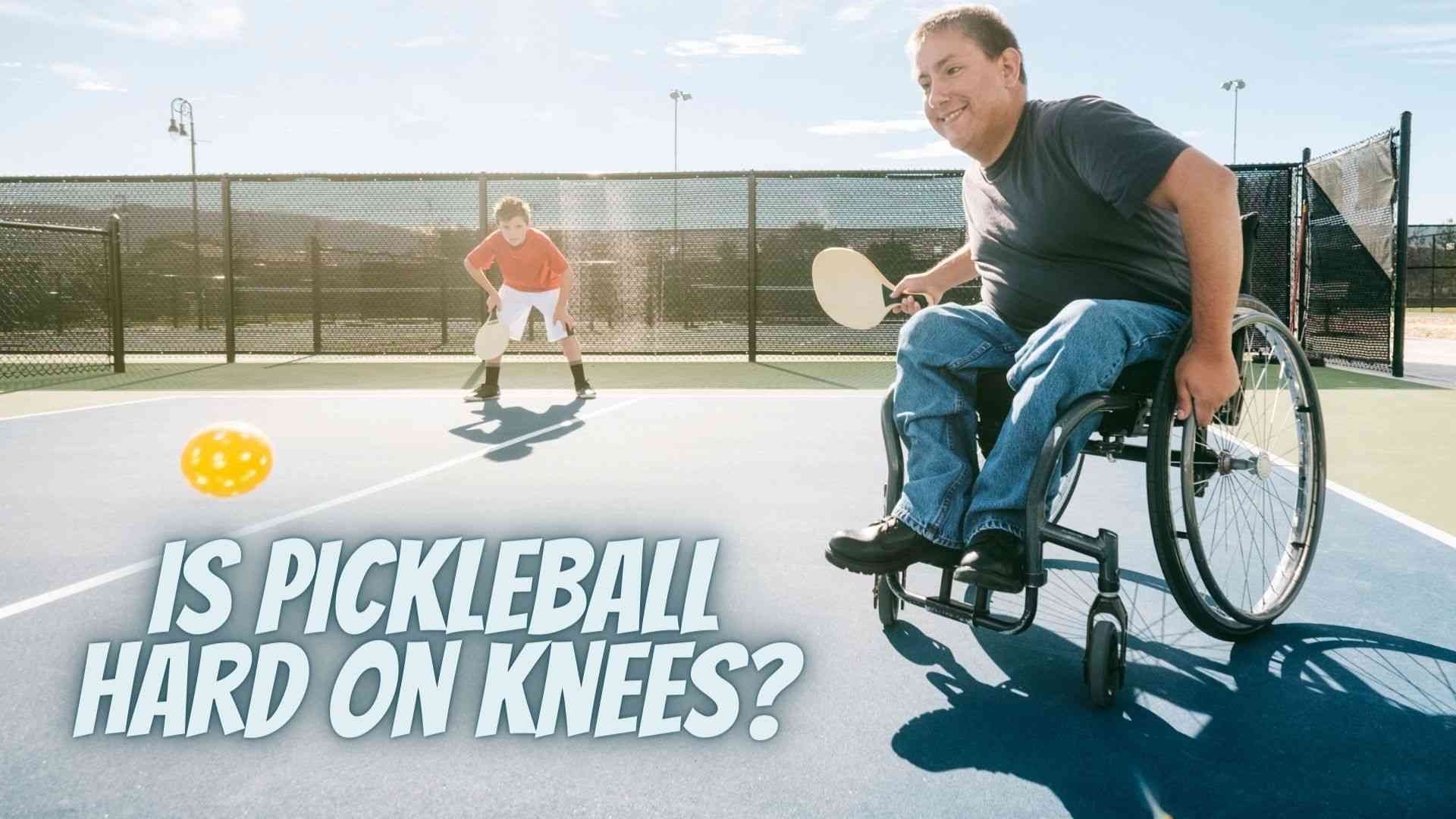
Are you considering taking up pickleball, but concerned about whether is pickleball bad for you? As more people flock to the pickleball courts, a growing concern remains in the minds of players – is pickleball hard on knees?
Pickleball is easier on your knees than tennis or racquetball since you don’t have to run as much. Yet, for older folks, especially those dealing with arthritis or balance problems, it can be tough on their knees and might cause them to slip on the court.
Let’s dive in and discover more about whether is pickleball hard on the knees and ensure that pickleball remains an enjoyable and knee-friendly activity for you.
The Pickleball-Knee Connection

It’s not surprising, considering the sport’s unique blend of rapid lateral movements, sudden stops and starts, and quick pivots, all of which put stress on the lower extremities, including the knees.
It’s essential to understand the mechanics of pickleball and how they relate to your knee health to know about the impact of pickleball on your knees.
How Pickleball and Knee Pain Correlates?
Pickleball is typically played on a rectangular court, either indoors or outdoors, with dimensions of the pickleball court similar to those of a badminton court. Players use a solid paddle to hit a lightweight, perforated ball over a net.
The game includes fast-paced rallies, quick lateral movements, and abrupt changes in direction, all of which demand agility and precise footwork.
These aspects of pickleball can indeed put a strain on the knees, especially if you engage in extended and intense rallies.
It’s also important to note that the impact on knee health can vary from person to person, depending on factors such as your age, physical condition, playing style, and techniques of playing pickleball.
Knee Pain and Pickleball: Risks and Common Issues
Is Pickleball Hard On Knees?
This is one of the most common questions players ask and the answer to this question is delicate.
The fast-paced nature of pickleball, with its quick lateral movements and abrupt stops, can place strain on the knees and can also cause pickleball knee injuries.
To remove the potential risks, you should prioritize proper warm-up and knee exercises for pickleball, wear suitable footwear that provides adequate support and cushioning, and focus on maintaining good form and technique.
Also, using knee support products can help protect your knees during play.
Can You Play Pickleball After Knee Replacement Surgery?
Knee replacement surgery is a common solution for individuals suffering from chronic knee pain or joint deterioration.
Many pickleball enthusiasts wonder if they can continue playing this sport after undergoing knee replacement surgery. The answer largely depends on your post-surgery recovery speed and your doctor’s recommendations.
In some cases, you can return to pickleball after knee replacement, but you should follow a carefully structured rehabilitation plan and seek your orthopedic surgeon’s approval.
Can I Play Pickleball with a Torn Meniscus?
A torn meniscus is a common knee injury that can cause pain, swelling, and limited range of motion.
It’s not recommended to play pickleball with a torn meniscus, as it can worsen the injury and cause more pain.
Playing with a torn meniscus can be risky, as it may worsen the injury or lead to further damage.
Consult with a medical professional who can assess your specific case and provide guidance on whether pickleball is a safe option during your recovery.
Is Pickleball Bad for Knees?
Pickleball’s impact on knee health can vary among players. While it offers numerous benefits, including cardiovascular exercise and social interaction, the sport’s intensity and rapid movements can potentially strain the knees.
It’s essential to prioritize injury prevention, warm-up routines, knee exercises for pickleball, using proper techniques, and the use of supportive pickleball accessories like knee braces from reliable brands.
Pickleball vs. Tennis: Which is Kinder to the Knees?
When it comes to racquet sports, tennis has long been the standard-bearer, known for its physical demands and intense energy.
However, the rise of pickleball as a more accessible alternative may lead you to wonder whether one sport is kinder to the knees than the other.
Pickleball: A Lower-Impact Alternative?
Pickleball, often described as a fusion of tennis and ping pong, has gained popularity as a lower-impact sport.
Players use solid paddles to hit a plastic ball over a net, and the sport is typically played on smaller pickleball courts than tennis courts, requiring less ground to cover.
The smaller court size means shorter distances to move and less running, which can be less impactful on the knees compared to the expansive tennis court.
Also, pickleball’s lighter ball and slower pace can be less jarring on the joints, making it an attractive option for those seeking a sport with reduced impact.
However, pickleball’s fast rallies and quick lateral movements can still place stress on the knees, particularly during intense and competitive play.
Tennis: A High-Impact Tradition
Tennis, with its huge court and demanding gameplay, has long been celebrated for its physical challenges.
Tennis involves rapid sprints, powerful serves, and sudden stops, all of which can exert considerable force on the knees.
The larger court size and faster pace in tennis can lead to more intense knee strain compared to pickleball.
It’s worth noting that individuals with pre-existing knee conditions or injuries may find tennis more challenging on their knees due to its higher-impact nature.
Preventing Knee Injuries in Pickleball
There are several measures you can take to minimize the risk of knee injuries and keep your knees healthy while playing this dynamic sport.
1. Warm-Up and Stretching
A proper warm-up and stretching routine can significantly reduce the risk of pickleball knee injuries.
Spend a few minutes engaging in light cardiovascular exercises, such as jogging or jumping jacks, to increase blood flow to your muscles.
Follow this with dynamic stretching exercises that target your legs and knees, including leg swings and knee circles.
2. Choose the Right Footwear
Investing in the right footwear is crucial for knee health in pickleball. Proper pickleball shoes should provide excellent support, cushioning, and stability.
Look for shoes that offer lateral support to help with side-to-side movements, which are common in pickleball.
3. Focus on Technique
Proper pickleball techniques are useful in reducing the strain on your knees. Ensure that you use proper body mechanics, including bending your knees and maintaining a balanced stance.
Avoid overextending or reaching too far when making shots, as this can put undue stress on your knees.
Taking lessons or practicing with experienced players can help you refine your technique and protect your knees.
4. Utilize Knee Support Products
For added protection, consider using knee support products like knee braces or sleeves that can provide additional stability and help prevent injuries, particularly if you have a history of knee problems.
5. Listen to Your Body
Perhaps the most crucial piece of advice is to listen to your body.
If you experience any discomfort, pain, or unusual sensations in your knees while playing pickleball, take it seriously. Ignoring such signs can lead to more severe injuries.
Give your knees the rest they need, and consult a healthcare provider if necessary.
By incorporating these preventive measures into your pickleball routine, you can enjoy the sport while minimizing the risk of knee injuries. But in case you experience any injury, you can read further on how to deal with them.
Coping with Knee Pain and Injuries
1. Consult a Healthcare Professional
If you’re experiencing persistent knee pain after pickleball or have sustained a knee injury, the first step should always be to consult with Orthopedic specialists or sports medicine doctors.
2. Rest and Recovery
Avoid putting excessive strain on your knees, and give them the time they need to heal properly.
3. Consider Adaptive Play
If you’re eager to get back on the pickleball court while still managing knee pain, consider adaptive play.
This includes modifying your playing style, reducing the intensity of your matches, or playing with less competitive players who focus on a more relaxed and enjoyable game.
By following these coping strategies you can manage knee pain and injuries effectively while maintaining your connection to pickleball.
FAQs About Pickleball and Knee Health
1. Is Pickleball Easier on the Knees Than Tennis?
Pickleball is considered lower-impact than tennis and factors such as playing style, technique, and existing knee conditions play a significant role in how your knees will respond to either sport.
Some argue that pickleball’s smaller court size and slower pace can be gentler on the knees, while others contend that tennis’s emphasis on agility and strength can provide better overall knee health.
2. Is Pickleball Hard on Your Joints?
Pickleball does involve lateral movements, sudden stops and starts, and quick pivots, all of which can put a strain on your joints, including your knees. Compared to high-impact sports like running or basketball, pickleball is generally considered to be lower in impact. To minimize the impact on your joints, it’s essential to prioritize proper technique, warm-up routines, and the use of supportive equipment.
3. Can You Play Pickleball with Bad Knees?
Playing pickleball with bad knees is possible, but it requires caution and consideration. If you have knee issues or knee pain from pickleball, it’s crucial to consult with a healthcare professional before continuing or starting pickleball.
4. Why Does My Knee Hurt After Playing Pickleball?
Knee pain after playing pickleball can result from various factors, including overuse, improper technique, or underlying knee conditions. Common reasons for post-pickleball knee pain include strain on the ligaments and tendons, inflammation, or elevated existing knee issues. To address this pain, it’s advisable to rest, apply ice, and consider consulting a healthcare provider for a treatment plan.
Conclusion
In the world of pickleball, where passion meets physical activity, concerns about knee health are not uncommon.
Players and enthusiasts alike often question whether the enjoyment they derive from pickleball comes at the cost of their knee health and whether is pickleball bad for you.
The impact depends on several factors, including playing style, technique, and individual physical condition. What holds for one player may not apply to another.
The key takeaway from this guide is that while pickleball offers enjoyment and fitness benefits, the well-being of your knees should always be a priority.
In the end, pickleball is not just a sport; it’s a community that embraces players of all ages and abilities. Whether you’re a novice or a seasoned pro, your passion for the game can thrive while ensuring your knees stay strong and healthy for many matches to come.






